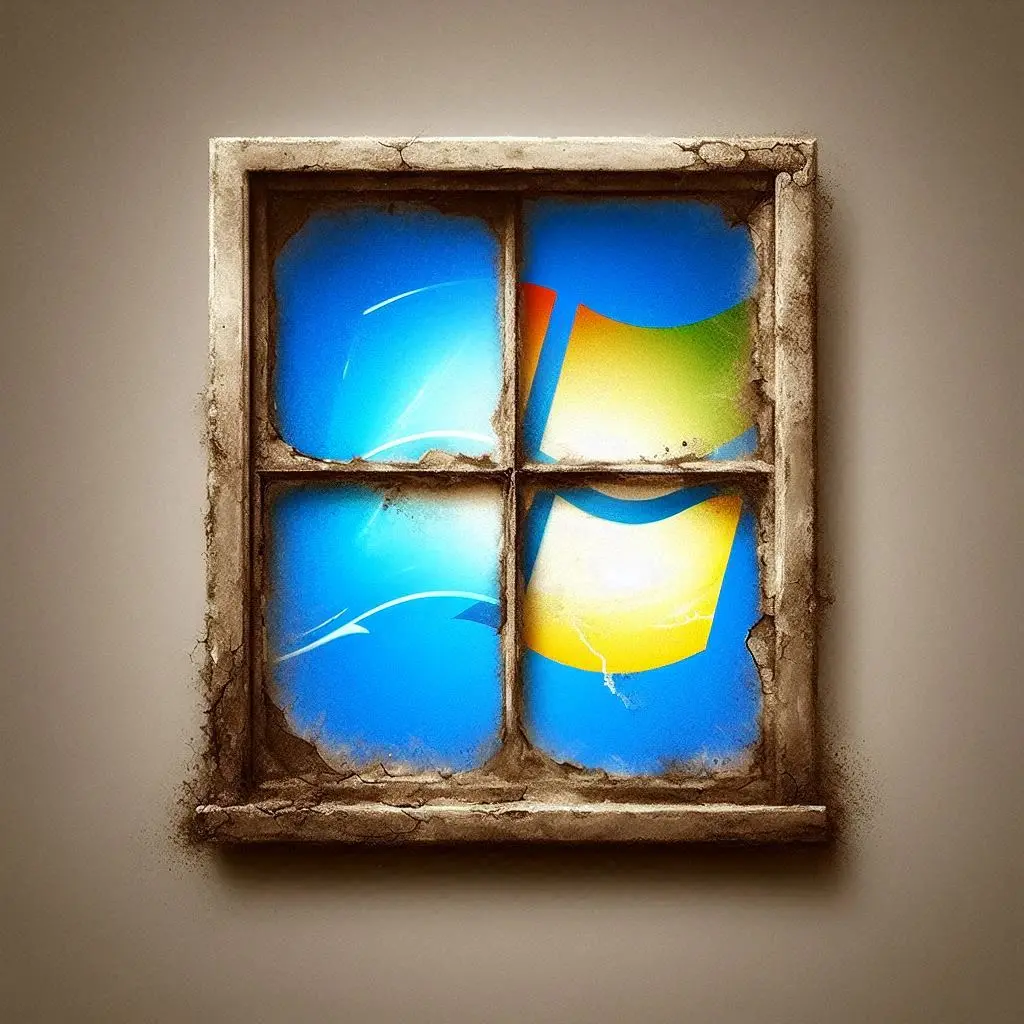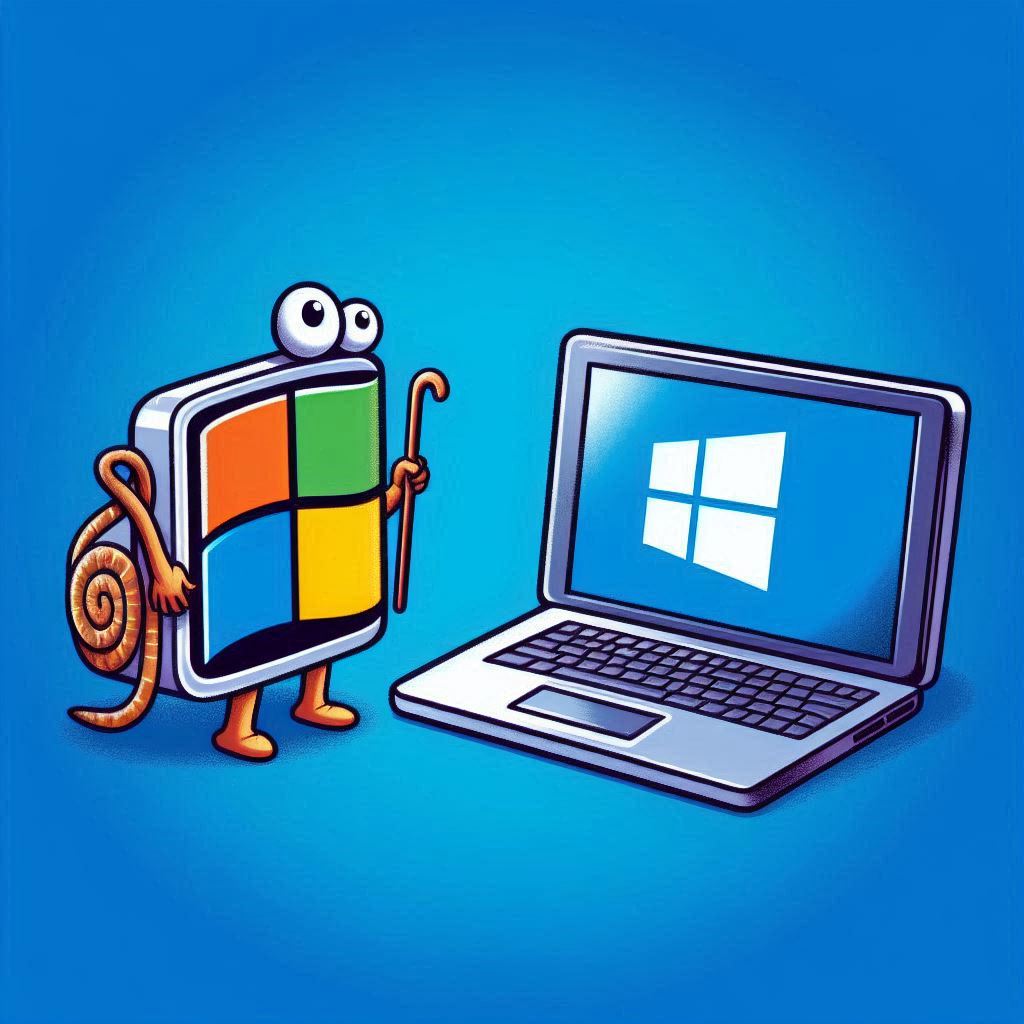So your Windows 10 Pc says it can’t be upgraded to Windows 11? What options do you have?
The clock is ticking for Windows 10 users. Microsoft has officially announced that October 14, 2025, is the end-of-life date for Windows 10 Home and Pro editions. After this date, your Windows 10 PC will no longer receive free security updates, feature updates, or technical support. While your computer will continue to function, running an unsupported operating system exposes you to increasing security risks as new vulnerabilities are discovered and not patched.
If you’ve tried to upgrade to Windows 11 and found that your PC doesn’t meet the minimum system requirements, you’re likely wondering what your next steps should be. Don’t worry; you have several options to consider before the support for Windows 10 ends. Let’s explore them:
1. Do Nothing! (Not Recommended):
As of April 2025 it is estimated that around 50% of all desktop Pcs are still running Windows 10, that could be something like 700 million devices!
That’s an awful lot of Pcs to upgrade. With such a high figure there are bound to be lots of people who will do nothing, whether it be through ignorance or apathy or a whole variety of other reasons, they will just carry on as normal and their risk of something bad happening will increase over time as more vulnerabilities appear.
While technically possible, continuing to use Windows 10 after October 14, 2025, is highly discouraged for any internet-connected device. Without security updates, your PC becomes increasingly vulnerable to malware, viruses, and other cyber threats. It’s akin to leaving the doors and windows of your house unlocked.
Now there could be some scenarios where this is okay, For many years I worked in a science and research environment that would often need isolated systems or individual Pcs connected up to machines to collect data that didn’t need to be on a network, so for these edge cases it may be perfectly reasonable to continue with Windows 10 until the Pc dies or gets replaced.
2. Purchase a New Windows 11 Compatible PC:
This is of course what Microsoft recommends (along with all their hardware chums). Just toddle down to your local retailer or online store and splash the cash on a new machine.
This is the most straightforward and recommended long-term solution to ensure you have a secure and up-to-date computing experience. New PCs are designed to meet the Windows 11 system requirements and will receive the latest updates and support from Microsoft.
Now, many people will be fine with this, after all it gives you a good excuse to go out and get something new. But then there will be others who will find it difficult to justify such an outlay for a new machine when their old one is apparently working fine and still meeting their needs.
It also begs the question, how many of these old (and possibly still useful) Pcs will end up being dumped.
3. Purchase a Second Hand Windows 11 Compatible PC:
Manufacturers have known about Windows 11 and its requirements for several years now so finding second hand machines that are compatible is now quite viable. Most big companies have a 3-5 year turnover in their computer hardware meaning that there are now many used and sometimes refurbished devices being sold by big retailers.
If you have a bit of technical confidence then there may well be some good deals to be found second hand, that way you can get a machine that will hopefully be usable for a few years without costing the earth.
When considering buying a PC, ensure it meets the official Windows 11 system requirements:
- Processor: 1 GHz or faster with 2 or more cores on a compatible 64-bit processor. (Specific Intel, AMD, and Qualcomm processors are supported). 8th Gen or higher.
- RAM: 4 GB or greater. (honestly, you need at least 8GB to avoid frustration)
- Storage: 64 GB or greater available disk space.
- System firmware: UEFI, Secure Boot capable.
- TPM: Trusted Platform Module (TPM) version 2.0.
- Graphics card: DirectX 12 compatible with WDDM 2.0 driver.
- Display: 9-inch or greater with 720p resolution.
- Internet connection: Required for updates and some features (Windows 11 Home requires it for initial setup).
But to be honest it’s probably easier just to do a quick search on the make and model and check that the manufacturer says it’s designed for Windows 11.
4. Upgrade to Windows 11 Using Workarounds (Use with Caution):
Several unofficial methods exist to bypass the Windows 11 hardware requirements, particularly the Trusted Platform Module (TPM) 2.0 and CPU generation restrictions. These often involve using tools like Rufus to create modified installation media or making registry edits during the installation process.
Now there are several potential issues to consider:
- Not officially supported by Microsoft: This means your system might not receive all updates, including crucial security updates, and Microsoft won’t offer support if you encounter issues.
- Potential instability and performance problems: Windows 11 is designed for specific hardware, and running it on unsupported systems can lead to unexpected errors, crashes, and reduced performance.
- Uncertainty about future compatibility: Microsoft might implement changes in future Windows 11 updates that could break these workarounds or cause further issues on unsupported hardware.
- Increased risk of malware: Running an unsupported configuration might make your system more susceptible to security vulnerabilities.
Having said all that, personally I am quite happy to give it a go. I think it’s unlikely that Microsoft will deliberately go out of its way to stop such Pcs getting updates. For most people this is only a temporary fix, at some stage that old Pc will just be too old or break down and require replacement anyway.
One of my daily home use machines is an old HP laptop that was designed for Windows 7. I was warned that it was not compatible with Windows 10 but I went ahead and installed it anyway. Several years later it’s still going strong.
If you choose to explore this option, proceed with caution and ensure you have a complete backup of your data. Research the specific method thoroughly and understand the risks involved. Some common workarounds include using Rufus to create a bootable USB drive with compatibility checks disabled or manually editing the registry during the Windows 11 installation.
I have tried both methods but had limited success with the registry hacks and upgrades. In most cases I would prefer to go with a new install using Rufus. I find that all Windows machines slow down over time and a fresh install will give you the most favorable result performance wise.
5. Consider Switching to an Alternative Operating System (e.g., Linux or ChromeOS Flex):
If you’re not tied to the Windows ecosystem, exploring alternative operating systems like Linux or ChromeOS Flex could be a viable option to extend the life of your current hardware.
Many home users tend to live in the browser these days, also many systems are becoming cloud based and you may not even install local apps anymore. If that’s the case then one of the alternatives may just work for you.
Linux: A family of open-source operating systems offering various distributions (e.g., Ubuntu, Mint, Fedora) with different user interfaces and software availability. It’s known for its customizability and strong community support.
Many distributions are less demanding on hardware than Windows making it a good choice for older machines, generally very secure, highly customizable, and free to use. Some people think Linux is not as intuitive and harder to learn, but in reality most distributions have a taskbar and a start button etc. just like Windows, you navigate menus and click icons.
On the down side there is a Steeper learning curve for users who want to do more than just the basics, some Windows-specific software might not be natively compatible (though compatibility layers like Wine exist), and driver support for certain hardware can sometimes be an issue.
ChromeOS Flex: A cloud-first operating system from Google that can be installed on older PCs. It’s lightweight and focuses on web-based applications.
Generally easy to install and use, lightweight and fast, good security, and seamless integration with Google services.
It is primarily designed for web-based tasks so it’s ideal if you mostly use your Pc to check email and browse the web but it has very little offline functionality without internet access, and compatibility with traditional desktop applications is limited.
There are rumours and speculation that Google is going to transition ChromeOS to Android. There is no concrete timeline or official announcement as yet so if you do give Flex a go it probably won’t disappear in the foreseeable future.
5. Pay for Extended Security Updates (ESU) for Windows 10 (Limited Availability):
Microsoft offers an Extended Security Update (ESU) program for businesses and, in some cases, consumers, allowing them to pay for continued security updates for a limited time after the official end-of-life date.
It will provide a temporary solution to keep your Windows 10 PC secure for a bit longer.
The ESU program is subscription-based and the price typically increases each year.
ESUs are usually offered for a maximum of three years.
Eventually, you’ll still need to migrate to a supported operating system or new hardware.
Historically, ESU programs have been primarily targeted at business and educational customers. While a consumer option does exist, it’s crucial to check the latest information from Microsoft.
Making Your Decision:
The best course of action for you will depend on your budget, technical skills, how you use your computer, and your security needs.
For most users, purchasing a new Windows 11 compatible PC is the most recommended path forward to ensure a secure, stable, and supported computing experience.
Tech-savvy users who are comfortable with potential risks and limitations might consider the unofficial upgrade workarounds, but should do so with caution and a clear understanding of the implications.
If you’re open to a different computing experience and your primary tasks are web-based, exploring Linux or ChromeOS Flex can breathe new life into older hardware.
Paying for ESUs is generally a temporary solution for specific needs, particularly for businesses needing more time for migration.
Don’t wait until the last minute. With the Windows 10 end-of-life approaching fast, now is the time to assess your options and plan your next move to ensure a secure and productive computing future.


